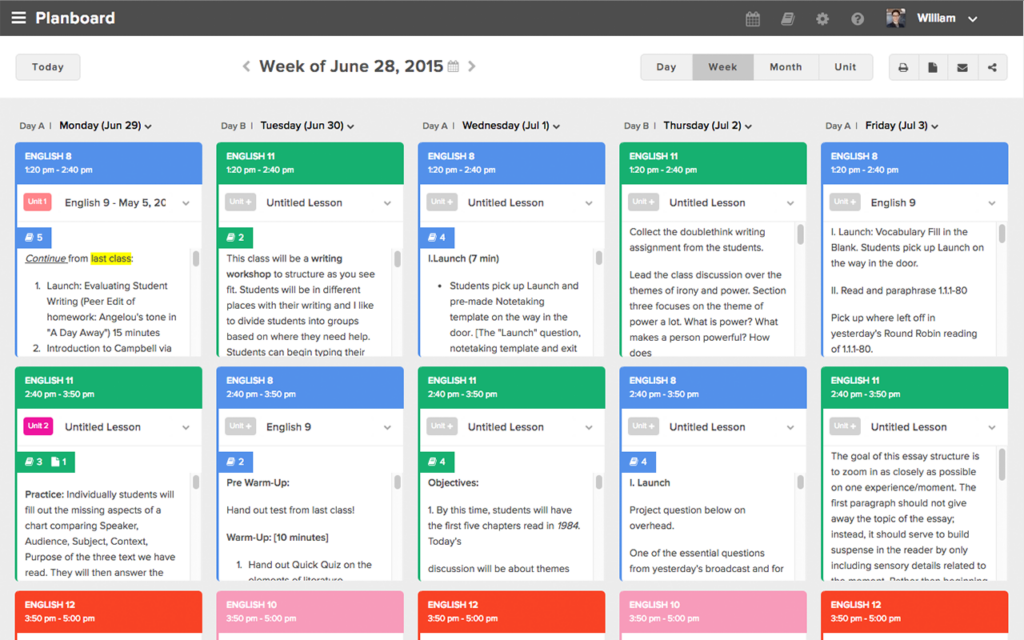Educators implement effective planning, instruction, assessment and reporting practices to create respectful, inclusive environments for student learning and development.
Over the course of the 491 Summative Practicum, I made a point of staying organized with the intent of staying on top of planning and assessing. I used some methods I familiarized myself with during the 490 Formative Practicum as well as some I explored between the two practicums based on my experiences in the 490 one.
One of these tools is https://app.chalk.com/. I learned about this online teaching planner during the observations at the start of the program. A teacher at Veritas showed it to our group. The image below shows what the calendar looks like. For privacy reasons, I did not use a screenshot of my own calendar. There are many YouTube tutorials on how to set up an account. Some key features include being able to set up a timetable, edit individual days, entering lesson plans, attaching documents, and adding notes. I add notes about EA and resource teacher support, and specific students being away or requiring extra help. It also provides the ability to connect each lesson to the curriculum. Another helpful feature is being able to produce a PDF of your day plan that includes links to the attached documents. This would be incredibly helpful when planning for a sub. The day plan could be printed out for them or, if circumstances required it, the plan could be emailed to the sub and they would have access to all worksheets or documents attached to the lessons. And it’s FREE to create an account!

Another tool I used was Excel spreadsheets. From my time working as a secretary and payroll clerk, I learned many useful features of Excel that added at-a-glance information for my gradebook setup. This included colour-coding and adding counts and averages for formative and summative assessments.
I also used Excel to create an overview of my practicum. The spreadsheet has a column with each subject and the rows are the days. It made it easy to consider the length of time I had to teach different topics and see how the holidays worked into the calendar. Being able to see an overview of what was planned across all subjects brought peace of mind and a sense of direction. It also made it easy to see what the overall workload would be like with all subjects side by side.
Being organized and keeping track of where students are at with their learning is important for creating inclusive and respectful learning environments. By maintaining detailed plans and notes and by keeping track of students’ progress, I know which students’ need extra assistance in certain areas of learning and I can allocate EA time, my time, and the students’ time to prioritize what they need to be learning.
For more of what I’ve learned related to creating inclusive environments for student learning and development, please explore the other posts I have made related to this standard:
Published:
Last Modified:
